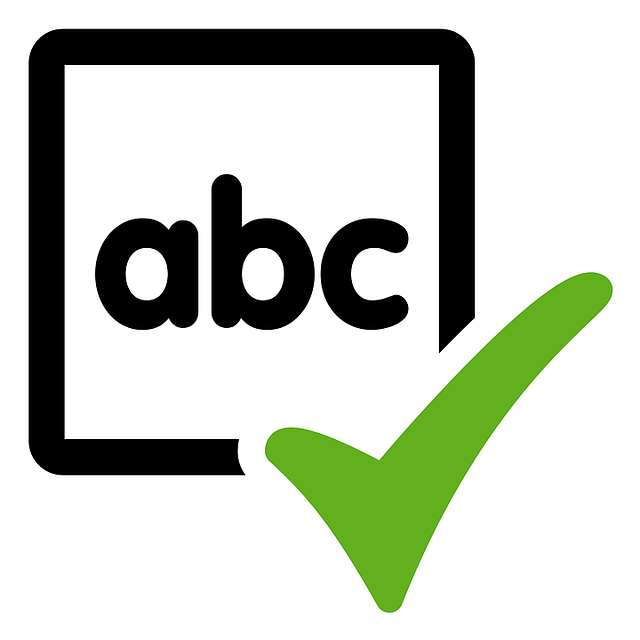A big thanks to everyone who took our proofreading quiz last week. Of the 128 respondents, Barb Poole was the only one to answer all 12 questions correctly. For her proofreading prowess, Barb wins a $25 Amazon gift card (and a job with ProofreadNOW.com if she wants it).
The correct answer appears below each question, along with a brief explanation.
Read More
Topics:
quiz answers,
quiz,
grammar quiz
With the overwhelming content requirements marketers face in today’s digital society, it’s more important than ever to make sure your content attracts your target audience. But you must also keep the search engines happy.
How do you accomplish this and turn your writing into reader-friendly business communications? Do your research and understand your readers’ needs.
Read More
Topics:
business writing,
search engines,
seo,
business communications
The lay vs. lie question frequently generates a lot of fireworks, so it seems an appropriate one to address following the Fourth of July.
Substituting lay (to place or arrange) for lie (to recline or be situated) is undoubtedly one of the most common usage errors in English. Why? Because, for one thing, the past tense of lie is lay. For another, lie can also mean to fib, and using the word correctly might lead to ambiguity in certain instances, as here: Eric is lying about the house.
Read More
Topics:
lie,
lay,
laying,
misused words,
lying
Any proofreader worth their salt will tell you that a single punctuation mark can mean the difference between success and disaster. (If you don’t believe us, just ask a constitutional lawyer about the Great Semicolon Debate of 1787.)
More often, incorrect punctuation sends a message to your audience, and it’s not the one you intend. It signals that you’re sloppy in your written communications and don’t care enough to make it right. And if you’re careless in that area of your business, prospective clients will wonder if you’re sloppy in other areas. Can you afford to take that chance?
Read More
Topics:
punctuation,
commas
Nearly everyone has to write a resume at some point, and our editors tackle a fair number of them on a regular basis. Most of our customers simply want us to check for errors (a good thing!), but we’ve seen more than a few that would benefit from an overhaul. That’s because the majority, by far, are formatted traditionally, listing work experience in reverse chronological order, with an accompanying description of job duties for each position.
Read More
Topics:
skills-based resume,
resume writing,
resume
Most businesses have produced a lot of content across a wide variety of channels. Between social media, blogs and website content, it’s difficult to keep track of everything that’s out there. It’s important to remember that the value and appearance of your content are a direct reflection of your business and can significantly impact your reputation.
Read More
Topics:
proofreading,
maintain consistency in writing,
consistency in writing,
consistent messaging
The release of the 2016 AP Stylebook on June 1 tolled the blessed end of a style point I’ve never understood: the capitalization of internet (and the related web). It evokes a similar sense of satisfaction as AP’s decisions in 2010 to use website instead of Web site and in 2011 to use email instead of e-mail.
Read More
Topics:
capitalization,
AP style,
AP stylebook
Everyone makes typos. Yes, everyone! World leaders, university professors, famous authors and (gulp) even professional editors occasionally miss a keystroke or three. The very best writers make the same mistakes as the rest of us. What sets them apart is that they understand the importance of having others review their work for grammar, spelling, punctuation, style and structure.
Read More
Topics:
typos,
typographic errors,
typographical errors
For being such a small word, only wreaks a lot of havoc — largely because it’s probably the most frequently misplaced word in the English language.
Its proper placement is immediately before the word or phrase it modifies. The farther it strays, the more likely ambiguity will result.
Consider these examples:
Only Sarah sees clients on Mondays and Wednesdays.
Sarah only sees clients on Mondays and Wednesdays.
Sarah sees only clients on Mondays and Wednesdays.
Sarah sees clients only on Mondays and Wednesdays.
Read More
Topics:
placement of only
With the advent of instant messaging and texting, it may seem like we’ve lost all sense of the English language.
Sometimes the use of “u” instead of “you” or saying “gotta” or “wanna” instead of “have to” or “want to” can easily creep into things like email or memos. But here’s the question - is this okay in a business setting?
Read More
Topics:
slang,
business communications











